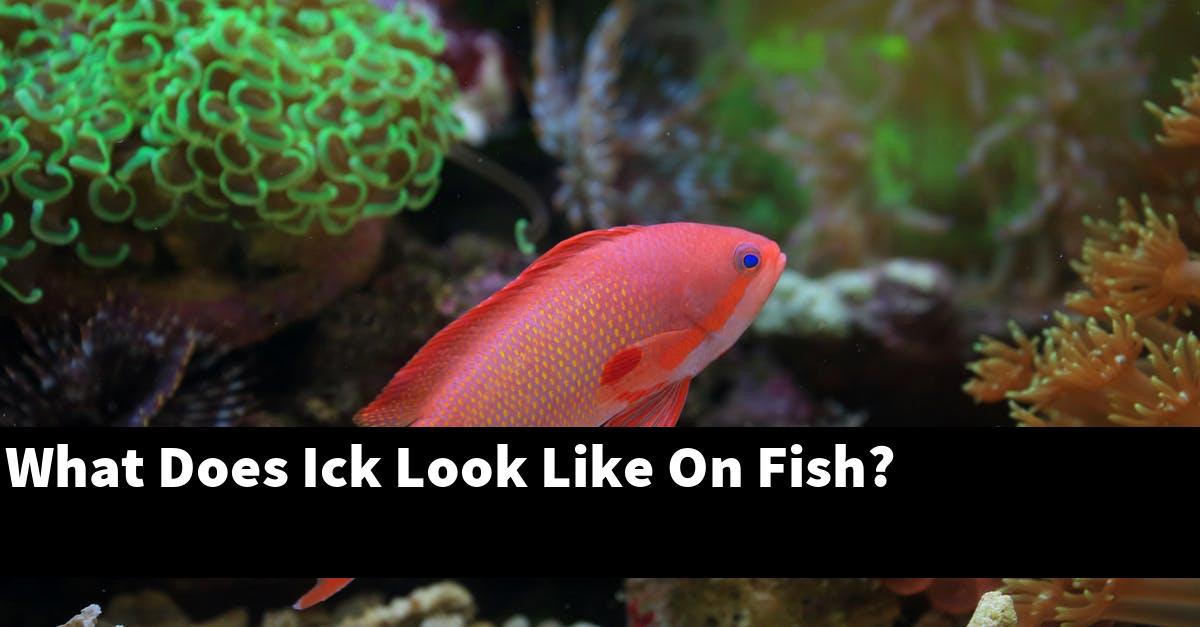The essay “What does ick look like on fish?” discusses the various ways in which the disease known as ick can manifest in fish. It describes the symptoms of ick and how to identify it, as well as the methods for treating it.
How do fish get the ick?
Fish get the ick from viruses. Fish can get these viruses from other fish, water, or air.
Fish can also get these viruses from other animals. Fish can sometimes get these viruses from bacteria.
How quickly does ich kill fish?
One of the most important factors in fish health and survival is how quickly they can eliminate toxins. Ich (or “cichlid sickness”) is a viral disease that can quickly kill fish.
Ich virus is spread through the water, and most fish succumb to the disease in just a few days. Ich virus is especially deadly to young fish, and can quickly kill entire populations of fish.
There are several ways to combat ich. First, keep your fish healthy by maintaining a clean tank and providing plenty of fresh, clean water.
Second, use a fish sanitizer to kill the ich virus before it can spread. Finally, use a fish disease treatment to help your fish survive ich.
How do you treat ick on a fish?
There are a few different ways to treat ick on a fish. One way is to use a quarantine tank to isolate the fish and treat it there.
Another way is to use a water treatment method.
How do I know if my white fish has ick?
There are a few things you can do to determine if your white fish has ick. One way is to take a look at its fins.
If the fish has dark patches on its fins, it may have ick. Another way to determine if your fish has ick is to smell it.
If the fish has a strong, fishy smell, it may have ick. Finally, you can touch the fish and see if it has any slimy spots.
If the fish does, it may have ick.
What does ick in a fish tank look like?
Ick is a white or yellowish film that can form on the surface of fish tanks. It is caused by the bacteria called “Pseudomonas aeruginosa.”
Ick can make fish sick and can even kill them.
Can you see ich in the water?
There is no good answer to this question. Ich can be present in any body of water and can be difficult to see.
It is typically a white or yellowish color and can be seen as small, floating organisms. Ich can be a problem in water supplies and can cause health problems for people who consume it.
What causes ick in fish?
One of the most common reasons for fish to develop an “ick” or bacterial infection is poor water quality. Poor water quality can be the result of a number of factors, including high levels of ammonia, nitrite, or nitrates.
Poor water quality can also be the result of a lack of oxygen or other nutrients.
Other factors that can cause fish to develop an ick infection include exposure to parasites, bad bacteria, or viruses. Poor water quality can also create an environment in which these pathogens can thrive.
If you’re noticing an increase in the number of fish infections in your aquarium, it’s important to take a look at the water quality. If the water quality is poor, there are a number of things you can do to improve it.
You can add more beneficial bacteria to the tank, increase the amount of oxygen available to the fish, or change to a water filter that is designed specifically for fish tanks.
How to cure fish ich naturally?
The best way to cure fish ich depends on the specific fish and the severity of the ich infection. However, some basic steps that may help to cure fish ich include: providing the fish with a clean and safe environment; using antibiotics only as a last resort; and treating the fish for other diseases if they are also experiencing fish ich symptoms.
Conclusion
Ick can present itself in a variety of ways on fish. However, some common signs of ick include white spots on the fish’s body, fins, or gills; increased mucus production; and lethargy.
If you suspect your fish has ick, it is best to consult a veterinarian or other fish expert for further guidance on diagnosis and treatment.


